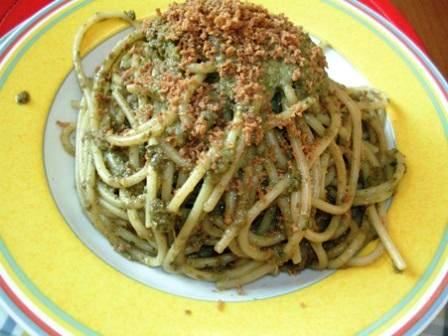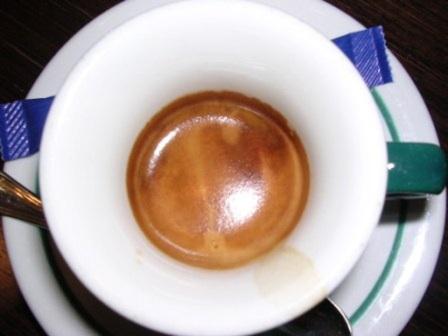Reisen nach Sizilien : Suche: Sie suchen: Sizilien Reiseführer, Sizilien
allgemeine Informationen, Ferienwohnung in Sizilien,
Terrasini der Ort, Ferienwohnung
in Terrasini, Sizilien, Terrasini
private Unterkunft, Sizilien Ferienwohnung Casa
Ullaegino, Sizilien App., Sizilien FEWO, Terrasini Fewo, Sizilien Bett und
Frühstück, Sizilien Bed and Breakfast, Sizilien Pension, Sizilien Hotel, Sizilien erleben, Sizilien buchen,
Sizilien Urlaub, Sizilien Reise, Sizilien reisen, Sizilien Wohnung, Sizilien
B&B, Sizilien
Rundreisen, Sizilien
Last Minute, in Sizilien wohnen, Sizilien Zimmer, Sizilien Pension,
Sizilien Ausflüge, Sizilien Ferieninsel, wo Sizilien
am Schönsten ist, Sizilien Highlights, Fotos von
Sizilien, Bilder, erlebte Momente, in einem Fischrestaurant, Strände, surfen, tauchen, Tauchschule,
Sizilien Rad fahren, in Sizilien wandern, sizilianisch kochen,
Rezepte aus Italien, die
sizilianische Küche, Siracasa, Weinheim,
Ferienwohnung in Weinheim, Unterkunft Weinheim,
Weinheim FEWO, Weinheim die Zweiburgenstadt,
Weinheim nahe Heidelberg, Weinheim nahe Mannheim, wohnen in Weinheim, Apartement in Weinheim, App.,
Appartement, Urlaub an der Bergstrasse, Ferien, Erholungsort, Urlaubsort, Sicily
Accomodation, Sicily Bed & Breakfast,Holiday in Sicily,
Tauchschule, Dive Center, Sicilia Casa Vacanze,
Sicilia Residenz, per le ferie in Sicilia, appartamento in Sicilia,
...was immer Sie Suchen... in unseren Webseiten finden Sie Informationen die
Ihnen behilflich sind bei ihrer Urlaubsreise oder Geschäftsreise...
...www.ullaegino.it... ...www.ferienwohnung-sizilien-weinheim.net... ...www.siracasa.de...
Sicilia a Tavola 
Sizilien bittet zu Tisch 
sit down at the table .. in Sicily 
on the road unterwegs in Sizilien ⇒ with UllaeGino trips around Sicily ⇒
| |
red garlic from Nùbia « last story / next story » sicilian culture and cuisineItalian Diet An Italian Diet is way to melt pounds effortlessly by eating natural food combined with walking and water. what do you think about the Italin diet? Italians really know how to live. They take two hour lunches, eat pasta at most every meal and maintain gorgeous figures.They are... truly the most beautiful looking people in Europe and not because of their fashionable clothing. Most Italians strive to cut the una bella figura (a fine figure) and are careful, but not obsessive, about what they eat. The sight of an obese Italian is rare. Shortly after moving to Italy, I adopted the Mediterranean diet and style of living. It paid off. I lost 30 pounds in 3 Months without trying. I ate anything I wanted and was healthy. No illness or disease had caused this rapid weight-loss. I found, after interviewing other new residents of this country, that an initial quick weight loss is typical. Breakfast – Breaking the fast with little fare. Breakfast is never the eggs, ham, bacon, toast, or pancakes ritual you find in America. In fact, trying to find all the ingredients to make such a breakfast is difficult. Yogurt or a croissant with a cappuccino serve the Italians well.At 11:00 a.m., Italians take a coffee break and eat something more substantial, such as a pastry or small sandwich (panino), which is made with a single, thin slice of ham (prosciùtto) and a single slice of cheese served on dry bread; there is no slathering of condiments between the slices. This snack staves off hunger and gives them a bit of energy until the larger lunchtime meal is consumed. Lunch – Lunch is typically the biggest meal of the day. Many courses are served over a period of time. When I first arrived in Italy, I cursed the three hour lunch break that seemed to shut down most of the cities. I couldn't sit still in a restaurant for three hours, yet I wanted to fit in. After I started lingering, I observed not only what Italians eat, but how they eat.They consume a lot of food, eat every morsel and they do it slowly. One rather strange phenomenon occurred when an individual ordered a pizza. They ate the entire pie without sharing it. The pies came in two sizes –- large, which is the same size as an extra large in America, and small, which is about the size of a medium American pie, and served only to children. Their pizzas are made with 1/4 the dough of American pizzas, and 1/4 the toppings. The sauce and cheese are spread thinly over the crust.The vegetables are cut larger. The second unusual sight is the size of the pasta courses, approximately 2 ½ cups per serving, tomato or olive oil based with a plethora of vegetables. Cream and cheese sauces are rare. You may hear the occasional ordering of a dish in a heavier parmigiana sauce, but also expect to hear a bit of teasing from the other guests. Bread is also served and consumed, but without butter. You would think all that starch went straight to everyone's hips. Italians are not concerned with such folly.The vegetable is next, if it is not served with the pasta dish. The salad arrives at the end of the meal. Beer and water are the most popular choices for beverages, with a large bottle of water being entirely consumed. Wine or soda is almost never served until dinner, which is after 8 p.m. in Italy. Several minutes pass between each course before the next one arrives. The servers know the table rarely gets turned (meaning they will only have one guest at a table for the entire lunch period), so there is no need to present the courses simultaneously. Dessert is usually saved, if consumed at all, for the evening meal. Italians would rather take a gelato (ice cream) break at the end of the day than consume a crème caramel in the restaurant.Exercise – Most Italians eschew a formal exercise plan. They do not have time (see “Shopping”). After lunch, they walk. Italians are always in a rush to get somewhere unless it is just after lunch, then they all (finally) slow down. Since workers have a three hour break, the walk back to work can be leisurely and long. This is the way to stay fit after eating all that food! Rome is built on seven hills, so walking those hills keeps the inhabitants fit around the clock. Shortly before dinner, Italians take the evening passeggiata (walk). Women will walk arm in arm, as will men sometimes.There is much talking and much socialization, by 8:30 p.m., most are back in their homes preparing dinner. Dinner – Dinner is served very late. Most restaurants close after lunch and reopen at 8 p.m. The typical family dinner is still a tradition throughout Italy. Lighter than lunch, dinner will usually consist of a pasta dish and at least two vegetables. Meat is consumed only a few times per month and may be made into a ragù sauce (which is typically of the Emilia-Romagna region) or as a side dish, such as veal scallopine. Meat is usually only a main course at a holiday dinner.Fish is more commonly served than meat. The cost of fresh fish (even salmon) is less than red meat which is probably why the Italian diet has always contained more of the sea inhabitants than the land rovers. Wine is typically served as the evening beverage along with a large pitcher or bottle of water on the table. Fruit is the dessert. If a richer dessert is desired, portions are very tiny. A small canoli, a third of the size as those found in America, is typical as is a thin slice of a fruit tart. Tarts are sold in pastry shops by the single serving. Water – Bottled over tap Although tap water is very drinkable and full of calcium, bottled water is most often consumed. Many Italians would never consider drinking anything other than bottled water with the choices being natural or sparkling. Italians also believe very cold beverages reduce the gastric fire and cause food not to be digested properly or completely, so they do not refrigerate their water, nor do they drink it with ice. Most Italians drink at least one liter of water per day if not more and Italian herbalists recommend drinking two liters.Shopping. – A daily ritual Food is very fresh in Italy. Many organic food products can be found on the supermarket shelves and most of the produce is grown locally without pesticides. This keeps toxics out of the Italian bodies and helps prevent weight gain. A few produce items are always stocked in cans such as peas and corn, but most Italians favor fresh over canned or frozen. As produce has little preservatives or chemicals sprayed on them it rots after two days. Italians must shop every day or every two days for their fresh ingredients. Daily shopping trips keep one’s legs and arms in shape as grocery stores are not as numerous as they are in the States and walks to them can be long. Italians are forced to consume a wide variety of food because very little is imported, so many mainstays of the American diet are only seasonal in Italy. Imports would have to be sprayed with preservatives and Italians would rather eat their food in its natural state.Beginning and End of the Day – Later and later Italians begin their days later than most Americans with many arising at 7 a.m. They also end their days much later, usually midnight. The extended days make their calorie burning sessions longer. The mid-day break seems to add to their overall energy level. There is no falling asleep at one’s desk or collapsing exhausted into bed at 9:00 p.m. The food and reduced preservatives and chemicals keep their bodies healthy and energetic as does the high consumption of water. After adopting the eating and walking practices for 3 months, is it any wonder those 30 pounds are now lost somewhere in Italy? That's fine by me. I hope they drown in the Adriatic. *Most Italians typically walk a minimum of three kilometers a day due to daily shopping and parking difficulties.Written by Caterina Baroniback / Home |

